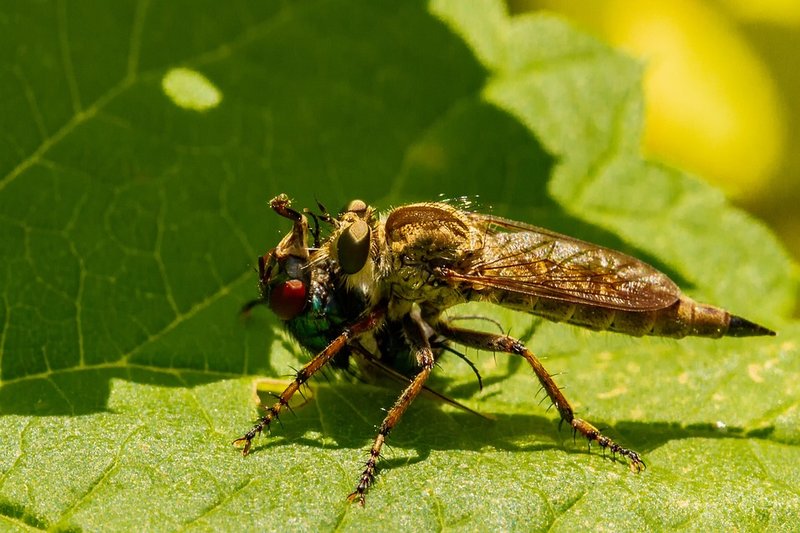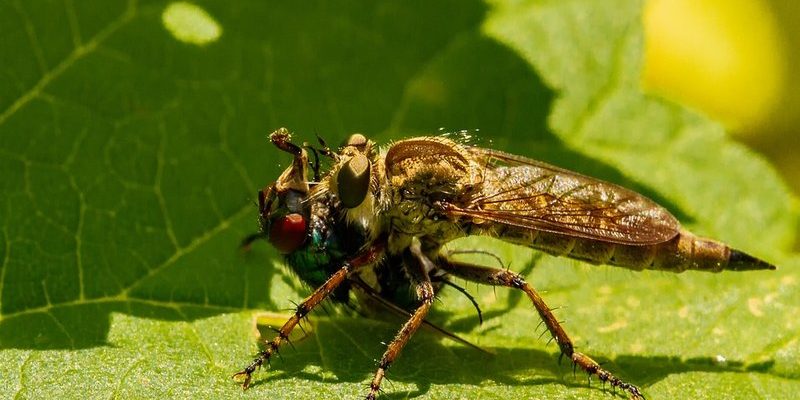
Picture the fly as a small player in a vast game of survival. In this game, there are both hunters and hazards lurking around every corner. From larger insects to birds, various creatures consider flies a tasty snack. Plus, environmental factors, like pollution and climate change, can seriously threaten fly populations. So, let’s dive deeper into the world of flies and explore who and what’s out to get them.
Common Predators of Flies
Flies have plenty of natural enemies, and one of the most familiar is the spider. You might not think about spiders when you picture flies, but these eight-legged predators have a knack for catching flies in their webs. Their silk traps can be surprisingly effective, and they’re stealthy hunters. One moment, a fly is enjoying a sunny day, and the next, it’s caught in a sticky situation.
Another notable predator is the dragonfly. You’ve probably seen these beautiful insects darting around ponds. Dragonflies are agile fliers and can capture flies mid-air with impressive precision. It’s like watching a skilled athlete perform amazing tricks in the sky. Their hunting technique is all about speed and accuracy, making them one of the top aerial predators of flies.
Birds also pose a significant threat to flies. Many species, like swallows and warblers, make flies a regular part of their diet. They swoop down and snatch them right out of the air. This is a classic case of the food chain in action, showcasing how flies contribute to the diets of many birds. So, the next time you see a bird grabbing a fly, remember that it’s simply playing its role in nature.
Insect Predators
Beyond spiders and dragonflies, flies face several other insect threats. One notorious enemy is the assassin bug. This little predator is named for its stealth and lethal hunting skills. It hides patiently, waiting for unsuspecting flies to come close. With a quick strike, it injects venom, paralyzing its prey before enjoying a meal.
Another insect that gives flies a run for their money is the praying mantis. With its signature posture and quick reflexes, the mantis is a formidable opponent. They can snap their front legs to capture flies almost effortlessly. It’s like watching a slow-motion scene in nature’s action movie—intense yet fascinating.
You might also be surprised to learn that some wasps target flies. For instance, the tachinid fly lays its eggs on or inside other flies. Once the eggs hatch, the larvae consume the host from the inside out. Yikes! This method might sound gruesome, but it’s just another example of nature’s complex relationships.
Environmental Threats to Flies
While predation is a major concern for flies, environmental factors can also take a toll. Pollution is a significant threat, particularly in urban areas. Flies are sensitive to changes in their environment, and contaminated water or food sources can harm their populations. Chemical pollutants can disrupt their reproductive cycles or lead to illness, reducing their numbers over time.
Climate change is another critical issue. As temperatures rise and weather patterns shift, flies may find it challenging to survive. They thrive in specific climates, and drastic changes can lead to habitat loss or changes in food availability. Warmer temperatures can also affect their mating and breeding behaviors, which could have long-term consequences for fly communities.
Additionally, habitat destruction—such as deforestation or urban development—can negatively impact fly populations. These activities can reduce the natural spaces where flies thrive and find food. When their habitats disappear, it isn’t just flies that suffer; whole ecosystems can feel the effects.
Diseases that Affect Fly Populations
Did you know that flies can also suffer from diseases? Just like other animals, they’re susceptible to various pathogens. Viruses, bacteria, and fungi can lead to significant declines in fly numbers. One common problem is the spread of fungal infections, which can be especially deadly.
For example, some fungi infect flies and manipulate their behavior. Infected flies may find themselves drawn to new habitats, which can harm their chances of survival. This phenomenon is sometimes called “zombie fly” behavior due to how the infected flies act differently. It’s another fascinating yet sinister twist in the life of a fly.
Additionally, parasites can impact fly populations. Just as we discussed with the tachinid wasps, other parasites can affect flies in deadly ways. They can weaken flies, making them more vulnerable to predators and environmental stresses. This interconnected web of life shows how one threat can lead to another.
Human Impact on Fly Populations
Humans have a profound impact on fly populations, both directly and indirectly. You might not think about it, but pesticides used in agriculture can lead to significant declines in fly numbers. These chemicals target pests but often harm non-target species, including beneficial insects like flies.
Urbanization also plays a role. As cities expand, flies lose their natural habitats, making it harder for them to find food and breeding grounds. This can lead to fewer flies in areas where they once thrived. It’s like taking away pieces of a puzzle, making it harder for the fly population to complete the picture of a healthy ecosystem.
On the flip side, some humans actively work to conserve and protect flies. Awareness of their ecological roles is growing, and efforts to provide habitats and reduce pollution are underway. By understanding the balance between flies and their threats, we can contribute to preserving these important insects.
Conservation Efforts for Flies
Given the various threats flies face, conservation efforts are becoming more essential. Protecting natural habitats is a crucial step. Initiatives to restore wetlands, meadows, and open spaces can help create safe environments for flies and other insects.
Another way to help is by reducing pesticide use. Many gardeners and farmers are shifting to organic methods that minimize harm to beneficial insects. By promoting insect-friendly practices, we can support healthier ecosystems.
Education is key, too! Understanding the importance of flies in pollination and as part of the food chain can rally support for their conservation. Whether it’s creating awareness in communities or supporting local farms that use sustainable practices, every little bit helps.
Flies may often get a bad rap, but they’re vital players in our ecosystems. From being a food source for other animals to aiding in pollination, their role is significant. However, the threats they face from natural predators, environmental changes, and human activities cannot be ignored.
Understanding these challenges can help us appreciate flies more and recognize their role in nature. By supporting conservation efforts and reducing harmful practices, we can help ensure that flies—and the intricate web of life they’re part of—continue to thrive. So, the next time you see a fly buzzing nearby, remember that it’s not just an annoyance; it’s a resilient survivor in a complex world.

